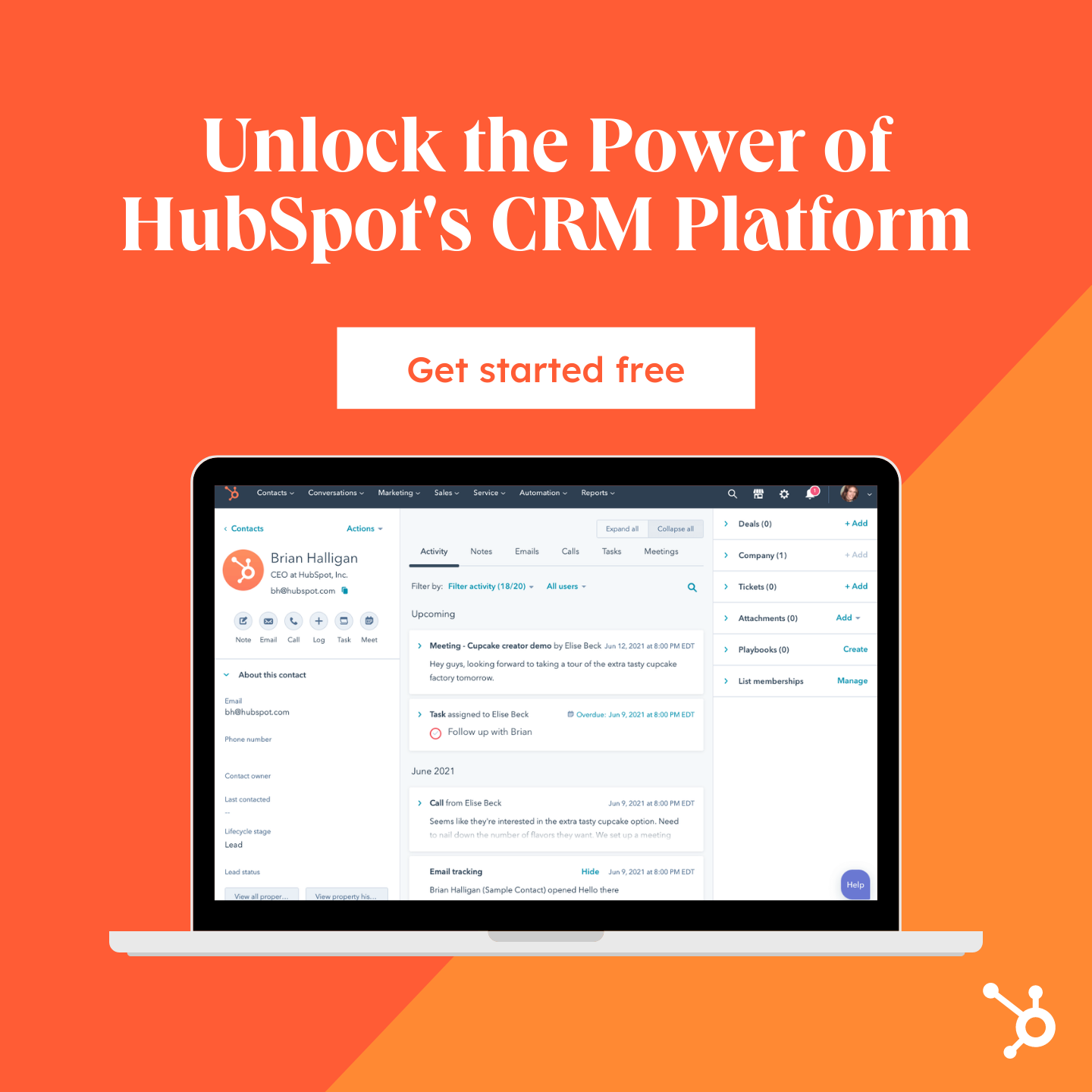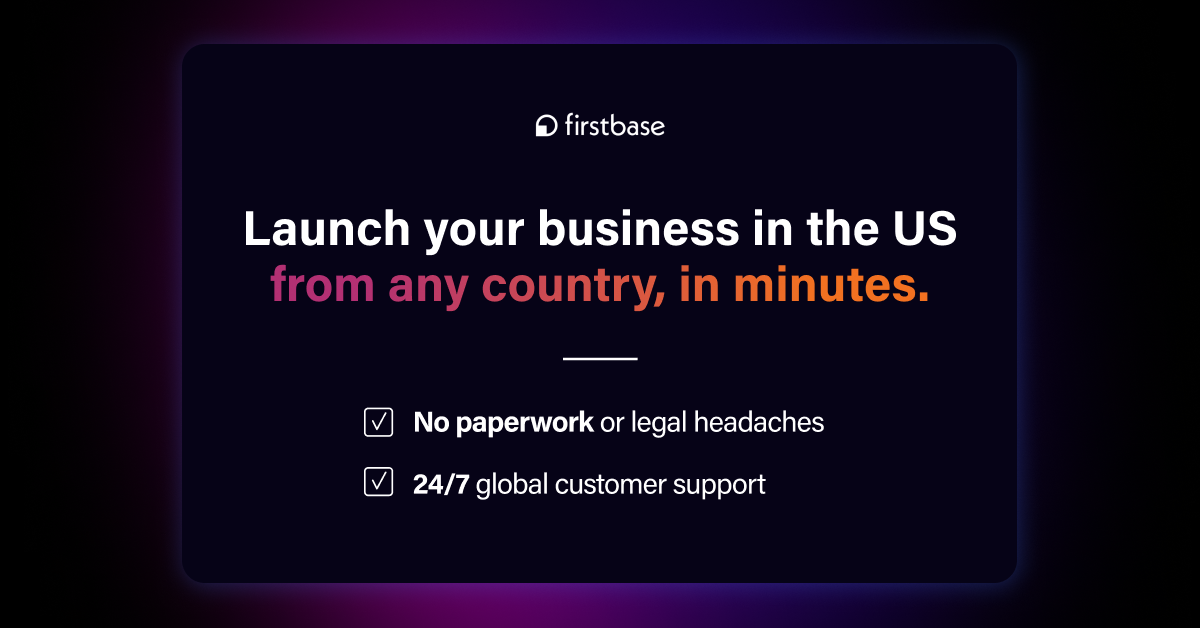The digital frontier is constantly reshaping global business, presenting unprecedented opportunities for growth, innovation, and value creation. As of April 2025, there were over 5.6 billion internet users worldwide, representing close to 70% of the world’s population. For astute investors focused on alternative assets and strategic acquirers, the mergers and acquisitions (M&A) landscape within the digital space is ripe with opportunities. Software-as-a-Service (SaaS) has long been a primary focus in digital M&A. However, a diverse array of other online business models now command significant attention. Navigating this dynamic space involves not only identifying these ventures—from content platforms to e-commerce innovators—but also leveraging strategic tools and platforms to enhance due diligence, uncover growth potential, and streamline transactions. The near ubiquity of AI, significant changes to Google’s search algorithm, and rapidly shifting global consumer trends continue to transform the landscape for digital businesses. As such, understanding the nuances of these digital assets, their underlying fundamentals, and the strategic growth levers available is key to capitalizing on the current wave of M&A opportunities.
In this blog, we delve into the current mergers and acquisitions opportunities in digital assets. We discuss the advantages of building, owning, and acquiring digital assets, focusing on popular digital platforms, e.g. Shopify,YouTube, dropshipping, blog sites, Instagram, etc. We highlight strategic levers for discovering opportunities and online visibility management for boosting growth. We also discuss various strategies investors can implement to boost value post-acquisition. Be sure to follow us on LinkedIn and Reddit. Let’s get started.
Disclosure: At ClearSky 2100 Ventures, our Growth Partner Network partly consists of affiliate partnerships. We may earn a small commission from buying links on our site at no cost to you.
The Advantages of Digital: Building and Acquiring Online Businesses
The growth in digital businesses is not merely a trend; it’s a fundamental transformation in how businesses operate and create value. Building or acquiring digital businesses offers a compelling set of advantages difficult for traditional brick-and-mortar enterprises to match. Broadly, these assets tend to be uncorrelated to financial markets. Additionally, there are many other benefits driving M&A activity in the digital space. Some of the main benefits of owning digital assets include.
- Scalability: Certain digital businesses can often scale with remarkable speed and efficiency. Unlike physical operations that require significant capital expenditure for expansion (e.g., new stores, larger factories), digital assets can serve a rapidly growing customer base with incremental increases in server capacity or software licenses. This inherent scalability allows for exponential growth potential without a linear increase in costs.
- Global Reach: The internet transcends geographical boundaries. Total internet users worldwide exceed 5.6 billion. A digital business, by its very nature, can reach a global audience from day one. This provides access to vastly larger markets than typically available to localized traditional businesses, opening up diverse revenue streams and customer segments.
- Lower Overhead: Compared to their physical counterparts, many digital businesses operate with significantly lower overhead costs. Expenses related to rent for prime retail space, extensive physical inventory, and large on-site staff can be drastically reduced or eliminated. This leaner operational model can lead to higher profit margins and greater financial flexibility.
- Data-Driven Decisions: Digital platforms generate vast amounts of data on customer behavior, preferences, and engagement. In 2025, roughly 2.8 billion people shop online, with e-commerce sales expected to exceed $6 trillion. This wealth of information allows businesses to make highly informed decisions regarding product development, marketing strategies, and customer service. The ability to track metrics in real-time and iterate quickly is a powerful competitive advantage.
- Diverse Monetization Models: The digital landscape offers numerous revenue models. These include advertising and subscriptions to affiliate marketing, direct sales of digital or physical products, and premium content. As such, online businesses can often layer multiple monetization strategies, creating resilient and diversified income streams.
- Resilience and Adaptability: Digital businesses often demonstrate greater resilience in the face of economic shifts or unforeseen disruptions (like pandemics). Digital businesses can operate remotely, adapt service delivery online, and pivot strategies quickly based on market feedback makes them more agile and robust.
- Targeted Marketing: Digital marketing tools allow for highly targeted campaigns, reaching specific demographics and interest groups with precision. This increases marketing ROI and reduces wasted ad spend, a significant advantage over broader, less targeted traditional advertising methods.
These advantages collectively make digital businesses attractive acquisition targets and compelling ventures to build from the ground up, fueling a dynamic M&A environment.
Strategic Levers: Boosting Growth and Identifying Opportunities in Digital M&A
Successfully navigating the digital M&A landscape, whether buying or selling, goes beyond identifying a promising asset; it requires a strategic approach to growth and value creation. For acquirers, unlocking post-acquisition synergies and accelerating growth is paramount. For sellers, demonstrating a clear growth trajectory and robust operational health is the key to commanding a premium valuation. There are several tools and platforms that significantly aid in these endeavors.
Enhancing Due Diligence and Growth Potential with Analytics
Understanding the underlying performance and market position of a digital asset is crucial. This is where comprehensive analytics and SEO tools become invaluable.
- SEO and Content Strategy: For content-driven businesses like blogs, YouTube channels, and affiliate sites, strong search engine optimization (SEO) is the lifeblood. Tools like Semrush offer deep insights into keyword rankings, competitor analysis, backlink profiles, and on-page SEO health. Acquirers can use Semrush to identify untapped SEO opportunities in a target asset (e.g., keywords to target, content gaps to fill) or to validate the existing traffic sources and organic reach. Sellers can leverage such tools to demonstrate the strength of their SEO foundation and identify areas for quick wins that a new owner could implement. For instance, a Semrush audit might reveal that an e-commerce site is missing out on significant traffic by not ranking for long-tail keywords related to its niche products, presenting a clear growth path post-acquisition.
- Market and Competitor Analysis: Understanding the competitive landscape is vital. Tools that provide insights into market trends, competitor performance, and audience demographics help in assessing the growth ceiling of an asset and identifying unique selling propositions. This data can inform strategic pivots or expansion plans.
- Traffic and Engagement Metrics: Verifiable traffic data (e.g., from Google Analytics) coupled with engagement metrics (time on page, bounce rate, conversion rates) provides a clear picture of an asset’s health and audience connection. For businesses reliant on advertising revenue, like many blogs or YouTube channels, these metrics are direct indicators of earning potential.
Leveraging Marketplaces for Discovery and Valuation
Digital business marketplaces have become essential hubs for both buyers and sellers, offering a platform for discovery, valuation, and transaction. These platforms democratize access for buyers and sellers, creating opportunities for value creation. These marketplaces offer numerous benefits including
- Discovery and Deal Flow: Platforms like Flippa serve as extensive marketplaces where various digital assets, from starter websites and established e-commerce stores to SaaS businesses and mobile apps, are listed for sale. For acquirers, these platforms provide a centralized source of deal flow, allowing them to browse numerous opportunities, filter by specific criteria (e.g., niche, revenue, age), and connect with sellers.
- Valuation Benchmarks: Marketplaces often provide data and tools that can help in understanding typical valuation multiples for different types of digital businesses. While a bespoke valuation by a professional is often necessary for larger deals, observing asking prices, sales data (where available), and buyer interest on platforms like Flippa can offer valuable context. Sellers can use these platforms to gauge market appetite and set realistic price expectations.
- Streamlining Transactions: Many marketplaces offer tools and services to facilitate the transaction process, including secure payment handling and sometimes even basic due diligence support or brokerage services for premium listings. This can simplify the buying and selling process, especially for small- to mid-sized digital assets. Many of these services also are offered by Flippa.
Buyers and sellers can strategically employ analytics tools to unearth growth opportunities and leverage marketplaces for efficient discovery and transaction execution. This enables both buyers and sellers to significantly enhance their outcomes in the rapidly evolving digital M&A arena.
Most importantly, these resources empower stakeholders to make more informed decisions, identify hidden value, and ultimately, boost the chances of successful and profitable digital ventures.
Beyond SaaS: Exploring Diverse M&A Opportunities in Digital Assets
While SaaS M&A continues to be strong, the digital asset landscape offers multiple opportunities beyond subscription software. Acquirers are increasingly recognizing the value in content platforms, e-commerce ventures, and community-driven digital properties.

YouTube Channels: The Power of Video Content
- Overview of Business Activity: YouTube channels are content-driven platforms centered around video. YouCreators produce and upload videos on virtually any topic, from entertainment and education to news and tutorials. Successful channels build a loyal subscriber base, fostering a community around their content.
- Growth Trends & Growth Drivers: Video content consumption continues to explode. As of April 2025, YouTube remains the most visited website worldwide. Online video is projected to make up more than 91% of all consumer internet traffic in 2025. The creator economy is booming, with YouTube paying out billions to creators annually. Key drivers include the increasing preference for video over text for information and entertainment, the rise of mobile viewing, and the platform’s sophisticated algorithm that connects viewers with relevant content. The global creator economy market size is anticipated to exceed half a trillion U.S. dollars by 2027.
- Standard Revenue and Earnings Model:
- Google AdSense: Revenue generated from ads displayed on videos.
- Channel Memberships: Subscribers pay a monthly fee for exclusive perks.
- Merchandise Shelf: Selling branded merchandise directly below videos.
- Super Chat & Super Stickers: Viewers pay to have their messages highlighted during live streams.
- Sponsorships & Brand Deals: Direct partnerships with brands for dedicated videos or product placements.
- Affiliate Marketing: Promoting products/services and earning a commission on sales.
Diversification and Value Creation Strategies for YouTube Channels
An investor might acquire multiple YouTube channels in complementary niches (e.g., personal finance, investing, and entrepreneurship) to create a content network. This allows for cross-promotion, shared production resources, and broader audience reach.
Furthermore, a popular YouTube channel can be a powerful top-of-funnel for other digital assets, such as an e-commerce store selling related products, a blog site offering deeper written content, or an online course expanding on the channel’s topics. For instance, a channel focused on DIY home improvement could drive traffic to an e-commerce store selling tools and materials or to a blog with detailed project plans.
Key Risk Factors for YouTube Channels
- Platform Dependency & Algorithm Changes: Heavy reliance on YouTube’s platform means any changes to its algorithm, monetization policies, or terms of service can significantly impact viewership and revenue.
- Content Creator Burnout/Dependency: Channels often rely heavily on specific personalities. Creator burnout, departure, or reputational issues can severely damage the channel’s value.
- Copyright Issues & Demonetization: Risk of content being flagged for copyright infringement or demonetized due to policy violations, leading to revenue loss and potential channel strikes.
…90% of creators experience burnout with changes to the algorithm the most-cited (65%) cause.
Dropshipping: E-commerce Without Inventory
- Overview of Business Activity: Dropshipping is an e-commerce fulfillment method where a store doesn’t keep the products it sells in stock. Instead, when a store sells a product, it purchases the item from a third party (a manufacturer or wholesaler) and has it shipped directly to the customer. The dropshipper never handles the product directly.
- Growth Trends & Growth Drivers: The global dropshipping market was valued at approximately USD 250 billion in 2023 and is projected to grow at a CAGR of around 25% from 2024 to 2033 to reach USD 2.3 trillion. Growth is driven by the continued expansion of e-commerce, low barriers to entry (no need for significant inventory investment), the increasing availability of supplier integrations (e.g., via platforms like AliExpress, DHgate, Spocket), and the flexibility it offers solopreneurs and entrepreneurs.
- Standard Revenue and Earnings Model: The primary revenue model is the retail markup. The dropshipper sets a retail price for products on their website. When a customer purchases, the dropshipper pays the wholesale price to the supplier and keeps the difference (the profit margin). Earnings depend on product selection, marketing effectiveness, supplier reliability, and pricing strategy.
Diversification and Value Creation Strategies For Dropshipping Sites
An investor could acquire several niche dropshipping stores and consolidate backend operations (customer service, marketing) for efficiency. A more advanced strategy involves evolving successful dropshipping stores into branded e-commerce businesses by identifying winning products and eventually moving towards holding some inventory for better quality control and shipping times or even developing unique private label products.
The dropshipping model can also be used as a low-risk method to test product demand before investing in inventory for a larger e-commerce play or integrating with a content site that reviews or features related products. For example, a portfolio of dropshipping stores in the pet niche could be acquired, and then a central pet-focused content blog could be developed to drive organic traffic to these stores.
Key Risk Factors for Dropshipping
- Supplier Reliability & Quality Control: Dependence on third-party suppliers can lead to issues with product quality, stock availability, and shipping times, damaging customer satisfaction and brand reputation.
- Intense Competition & Low Margins: The low barrier to entry means high competition, often leading to price wars and thin profit margins, making sustained profitability challenging.
- Customer Service Challenges: Handling returns, refunds, and customer complaints can be complex when not directly controlling inventory or the shipping process.

Shopify Ecosystem: Powering E-commerce Success
- Overview of Business Activity: Established e-commerce businesses built on the Shopify platform offer compelling M&A opportunities. Shopify provides the tools to set up and run online stores, from website builders and payment processing to marketing and shipping integrations. Acquirable assets are the individual stores themselves, not Shopify Inc.
- Growth Trends & Growth Drivers: Shopify is a dominant force in e-commerce, powering millions of businesses worldwide. As of early 2025, Shopify merchants represent a significant portion of global e-commerce sales. The growth is driven by the overall expansion of online retail, the increasing desire for direct-to-consumer (DTC) brands to own their customer relationships, and Shopify’s user-friendly platform and extensive app ecosystem that allows for customization and scalability. The rise of social commerce, where users can purchase directly through social media platforms, often integrates with Shopify stores, further fueling growth.
- Standard Revenue and Earnings Model: The primary revenue source is the sale of physical or digital products. Profitability depends on the cost of goods sold (COGS), marketing and advertising expenses, shipping costs, and operational overhead. Successful Shopify stores often have strong branding, effective customer acquisition strategies (SEO, paid ads, social media marketing), and high customer lifetime value. Some stores also incorporate subscription box models for recurring revenue.
Diversification and Value Creation Strategies for Shopify Sites
An investor could build a portfolio of Shopify stores in related or complementary niches, leveraging shared marketing expertise, supplier relationships, and customer data. For instance, acquiring a store selling sustainable fashion and another selling eco-friendly home goods allows for cross-promotional opportunities to a similar target demographic.
Another strategy is to acquire Shopify stores and then develop proprietary Shopify apps that solve common pain points for those stores, which can then be sold to other Shopify merchants, creating an additional B2B revenue stream. Integrating acquired Shopify stores with content platforms (blogs, YouTube channels) that drive qualified traffic can significantly boost sales and reduce reliance on paid advertising.
The Philippines E-commerce market is the fastest growing in the world.
Key Risk Factors in Owning a Shopify Business
- Marketing Cost Escalation: Heavy reliance on paid advertising (e.g., Facebook, Google Ads) can lead to escalating customer acquisition costs, eroding profitability as competition increases.
- Inventory Management & Logistics: For stores holding inventory, risks include overstocking, understocking, storage costs, and complexities in order fulfillment and shipping, especially when scaling.
- Platform Dependency (Shopify): While Shopify is robust, businesses are still dependent on its platform fees, policy changes, and app ecosystem, which can impact operational costs and flexibility.
AI Agents & Automation: The Next Frontier
- Overview of Business Activity: This category includes businesses developing or utilizing AI agents, chatbots, automation tools, or small agencies offering AI-powered services. These can range from AI-driven customer service bots and marketing automation platforms to AI content generation tools, data analysis solutions, or specialized AI agents for specific industries (e.g., AI for legal document review or AI for medical diagnosis support).
- Growth Trends & Growth Drivers: The AI market is experiencing explosive growth. The global AI agents market is expected to reach USD 50.31 billion, registering a 45.8% CAGR between 2025 and 2030. Drivers include
- Advancements in machine learning
- Natural language processing and computer vision
- The increasing availability of big data
- Strong demand from businesses across all sectors to improve efficiency, personalize customer experiences, and gain competitive advantages
- Standard Revenue and Earnings Model:
- SaaS Subscriptions: For AI software and platforms (e.g., monthly fees for using an AI chatbot).
- Service Fees: For custom AI development, consulting, or managed AI services.
- Licensing: Licensing AI algorithms or platforms to other businesses.
- Usage-Based Pricing: Charging based on the volume of AI processing or tasks performed.
Diversification and Value Creation Strategies for AI Agents
Investors could acquire a portfolio of specialized AI tools and integrate them to offer a comprehensive AI solutions suite. For example, acquiring an AI chatbot company, an AI-powered email marketing tool, and an AI analytics platform could create a powerful customer engagement and automation offering.
A key strategy is to acquire AI businesses whose technology can be embedded into other acquired digital assets to enhance their performance. For instance, an AI-driven personalization engine could be integrated into acquired e-commerce stores or content platforms to improve user experience and conversion rates. An AI content generation tool could support the scaling of blog networks or YouTube channel script production.
Key Risk Factors for AI Agent Businesses
- Rapid Technological Obsolescence: The AI field is evolving extremely quickly; solutions can become outdated rapidly without continuous innovation and significant ongoing R&D investment. Think chatbots to AGI.
- Data Privacy & Ethical Concerns: Handling sensitive data for AI training and operation raises significant privacy, security, and ethical concerns, potentially leading to regulatory scrutiny and reputational damage if mismanaged.
- Talent Acquisition & Retention: Specialized AI talent is scarce and expensive, making it challenging to build and retain the necessary expertise to develop and maintain cutting-edge AI solutions.

Podcasts: The Intimacy of Audio
- Overview of Business Activity: Podcasts are episodic series of digital audio files that users can download or stream. They cover a vast range of topics, from news and comedy to in-depth interviews and niche hobbies. Successful podcasts cultivate a dedicated listenership and often build strong communities.
- Growth Trends & Growth Drivers: Podcast listenership has seen consistent global growth. In the US alone, 53% of Americans listen to a podcast at least once a month. Ad revenue in the podcasting industry is projected to surpass USD 4 billion in the US by 2025. Drivers include
- The convenience of on-demand audio
- Ability to multitask while listening
- The depth of content available
- Intimate connections hosts can build with their audience
- Increasing investment from major platforms like Spotify and Apple in podcast content and discovery
- Standard Revenue and Earnings Model:
- Advertising/Sponsorships: Host-read ads, pre-recorded spots, or sponsored segments are the primary revenue source for many.
- Premium Content/Subscriptions: Offering bonus episodes, ad-free versions, or early access for a subscription fee (e.g., via Patreon, Apple Podcasts Subscriptions).
- Affiliate Marketing: Recommending products/services and earning commissions.
- Merchandise Sales: Selling branded items to listeners.
- Live Shows & Events: Ticket sales for live recordings or events.
23.5% of global internet users listen to podcasts
Diversification and Value Creation Strategy for Podcasts
An acquirer could build a podcast network by acquiring shows in similar or complementary genres (e.g., a network of true crime podcasts or a network of business development podcasts). This allows for cross-promotion, bundled advertising sales, and shared production resources. PodX a Swedish private equity firm, recently acquired Lemonada Media for USD 30 million.
Podcasts can also be a powerful content pillar to support other digital assets. For instance, a podcast can drive traffic to a related blog for show notes and deeper dives, promote a YouTube channel featuring video versions of interviews, or market online courses and e-commerce products discussed by the host. The audio content can also be repurposed into written content (blog posts, articles) or short video clips for social media.
Key Risk Factors in a Podcasts Operating Model
- Audience Growth & Retention: Building and maintaining a substantial, engaged listenership is challenging in a crowded market; listener fatigue or changes in host/content can lead to audience decline.
- Monetization Challenges: Securing consistent advertising revenue can be difficult, especially for niche podcasts, and listener willingness to pay for premium content varies.
- Host Dependency: Similar to YouTube, many podcasts are heavily reliant on the host’s personality and expertise. Creator burnout is also a factor, and the departure or unavailability of a key host can cripple the podcast.
Blog Sites & Niche Content Platforms
- Overview of Business Activity: Blog sites and niche content platforms are websites focused on creating and publishing written content (articles, guides, reviews, news) on specific topics or for particular audiences. They aim to attract readers through search engines (SEO), social media, and direct traffic, building authority and a loyal readership in their niche.
- Growth Trends & Growth Drivers: Content marketing remains a cornerstone of digital strategy, particularly in the B2B space. High-quality, authoritative content drives organic traffic, builds brand trust, and supports lead generation. The value of niche sites is increasing as they can cater to specific, highly engaged audiences that are attractive to advertisers and marketers. AI-generated content continues to improve. However, well-researched, expertly written, and unique human-generated content continues to hold significant value, especially for complex topics or those requiring a distinct voice and perspective. Search engine algorithms increasingly favor E-E-A-T (Experience, Expertise, Authoritativeness, Trustworthiness), which strong niche sites can demonstrate.
- Standard Revenue and Earnings Model:
- Display Advertising: Revenue from ad networks like Google AdSense, Mediavine, or AdThrive.
- Affiliate Marketing: Promoting products/services within content and earning commissions.
- Sponsored Content/Brand Partnerships: Publishing articles or reviews paid for by brands.
- Selling Digital Products: Ebooks, templates, online courses, or premium content subscriptions.
- Lead Generation: Selling leads to other businesses.
Diversification Value Creation Strategy for Blog Sites
An investor could acquire a portfolio of blog sites in related niches to create a larger media entity, benefiting from shared SEO strategies, content repurposing, and broader audience reach. For example, acquiring blogs in different aspects of healthy living (fitness, nutrition, mental wellness) can create a comprehensive wellness platform.
Blog sites are excellent for driving traffic to e-commerce stores (e.g., a food blog linking to kitchenware products), affiliate offers, or service-based businesses. They can also be integrated with YouTube channels (blog posts as scripts or vice-versa) and podcasts to create a multi-format content ecosystem. Acquired blogs can also serve as a testing ground for new product ideas or service offerings before a larger investment.
Key Risk Factors for Blog Sites
- Search Engine Algorithm Volatility: Heavy reliance on organic search traffic makes blogs vulnerable to sudden drops in ranking and visibility due to Google algorithm updates.
- Content Quality & Scalability: Consistently producing high-quality, engaging, and SEO-optimized content at scale can be resource-intensive and challenging to maintain.
- Monetization Fluctuations: Ad revenue can be volatile, and affiliate income depends on conversion rates and partner program terms, which can change.
Instagram & Social Media Influence
- Overview of Business Activity: This involves acquiring established Instagram accounts (or other influential social media profiles) that have a significant and engaged follower base within a specific niche. These accounts act as brands or platforms for influencers to share content, build community, and partner with businesses.
- Growth Trends & Growth Drivers: Influencer marketing continues to be a rapidly growing industry, projected to be worth over USD 32 billion by the end of 2025. Social commerce – the ability to discover and purchase products directly within social media apps – is also expanding, with Instagram being a key player. Instagram boasts over 2 billion active users with over 200 million businesses on the platform. Additionally, 90% of all users follow at least one business. Growth drivers include the visual nature of platforms like Instagram, the trust and authenticity (perceived or real) that influencers can build with their audience, and the platform’s evolving tools for creators and businesses (e.g., Reels, Stories, Shops).
- Standard Revenue and Earning Model:
- Sponsored Posts/Stories/Reels: Brands pay to have their products or services featured.
- Affiliate Marketing: Sharing affiliate links for products and earning commissions.
- Brand Ambassadorships: Longer-term partnerships with brands.
- Selling Own Products/Services: Using the platform to market merchandise, digital products, coaching, etc.
- Instagram Shopping: Tagging products in posts for direct purchase.
- Badges/Subscriptions (where available): Followers paying for exclusive content or recognition.
Instagram boasts over 2 billion active users with over 200 million businesses on the platform with 90% of all users following at least one business.
Diversification and Value Creation Strategy for Instagram
An investor could acquire multiple Instagram accounts in complementary niches to create a network, offering advertisers package deals to reach a wider but targeted audience. A key strategy is using an acquired, high-engagement Instagram account as a primary traffic and brand awareness driver for other digital assets.
For example, an Instagram account focused on travel could drive bookings to an affiliated travel agency site, promote a travel blog, or sell branded travel accessories via a linked Shopify store. The visual content created for Instagram can also be repurposed for other platforms like Pinterest or as B-roll for YouTube videos.
Key Risk Factors for Instagram Influencers
- Platform Policy & Algorithm Changes: Similar to YouTube, changes in the Instagram algorithm affect reach, engagement, and monetization strategies. Understanding Instagram SEO remains essential to mitigating this risk.
- Audience Engagement & Authenticity: Maintaining high engagement and perceived authenticity can be challenging; follower fatigue, fake followers, or loss of influencer credibility can devalue an account.
- Shadow Banning & Account Suspension: Risk of accounts being “shadow-banned” (reduced visibility) or suspended for perceived policy violations, which can be difficult to appeal and severely impact operations.

Affiliate Sites: Driving Conversions
- Overview of Business Activity: Affiliate marketing sites are websites specifically designed to earn commissions by promoting other companies’ products or services. They typically publish reviews, comparisons, “best of” lists, tutorials, or other content that guides users towards making a purchase, embedding unique affiliate links to track referrals.
- Growth Trends & Growth Drivers: The affiliate marketing industry is thriving and worth more than USD 20 billion by 2024. Over the next six years, it’s expected to double to USD 40 billion. Growth is driven by its performance-based nature (advertisers only pay for results), its ability to drive targeted traffic and sales, and the relatively low startup costs for affiliate marketers. The increasing sophistication of tracking technologies and the proliferation of affiliate programs across nearly every industry also contribute to its expansion. Over 81% of advertisers use affiliate programs.
- Standard Revenue and Earnings Model: The sole revenue model is commission earned on sales, leads, or clicks generated through the site’s affiliate links. Earnings depend on the niche chosen and the commission rates offered by affiliate programs (e.g., Amazon Associates, PartnerStack, Impact, or in-house affiliate programs). It also depends on the volume of traffic the site attracts and its conversion rate (how effectively it persuades visitors to click and buy).
The average affiliate marketer earns $8,038 per month
Diversification Value Creation Strategy for Affiliate Sites
An investor might acquire a portfolio of affiliate sites across various niches to diversify risk and revenue streams. For example, owning sites in the tech, home goods, and finance niches can provide stability if one sector experiences a downturn. A powerful strategy is to integrate affiliate sites with other content platforms. For instance, a YouTube channel reviewing products could link to an affiliate site that provides more detailed written reviews and comparison charts, capturing traffic from both sources.
Acquired affiliate sites with strong SEO and high traffic can also be used to test the market for launching proprietary products, eventually transitioning from an affiliate model to a direct e-commerce model for high-performing product categories. Furthermore, an affiliate site can be a component of a larger media group, where its product recommendations support the content of blogs, podcasts, or social media channels.
Key Risk Factors for Affiliate Sites
- Affiliate Program Changes: Merchants can change commission rates, cookie durations, or even terminate affiliate programs with little notice, directly impacting revenue. This happens quite frequently, with some affiliate programs changing monthly.
- SEO Dependence & Penalties: Heavy reliance on search engine rankings for traffic; algorithm updates or SEO penalties can drastically reduce visibility and earnings. Recent Google algorithm updates and shifts to AI Overviews have negatively impacted affiliate sites, particularly those focused on B2C.
- Disclosure & Compliance Requirements: Growing regulatory scrutiny (e.g., FTC guidelines) requires clear disclosure of affiliate relationships; failure to comply can lead to penalties and loss of trust.
Charting New Courses: The Future of Integrated Digital Ventures
The M&A landscape for digital businesses is undeniably vibrant and extends far beyond the traditional SaaS model. Opportunities abound in content creation, e-commerce, and community-driven platforms, each offering unique pathways to growth and profitability. Additionally, the revenue and earnings models of these digital assets offer unique advantages over other types of physical assets or financial investments. These attributes offer investors such as HNWI, family officers, or strategic players opportunities to create value. Investors also benefit from solutions such as marketplaces for discovery and deal flow with Flippa and online visibility management from Semrush. The data and insights provided by these platforms provide investors with the confidence to invest in digital assets, providing a foundation for growth and value creation.
While the underlying fundamentals of digital assets provide benefits to investors, the true power, however, often lies in strategic diversification and integration. By acquiring and synergizing complementary digital assets—a YouTube channel feeding an e-commerce store, a blog bolstering an affiliate site, or an AI tool enhancing a portfolio of online services—investors can create ecosystems that are more resilient, efficient, and valuable than the sum of their parts. As the digital economy continues its rapid evolution, those who can identify and capitalize on these diverse opportunities and build interconnected digital ventures will be best positioned for sustained success and market leadership in the years to come.












